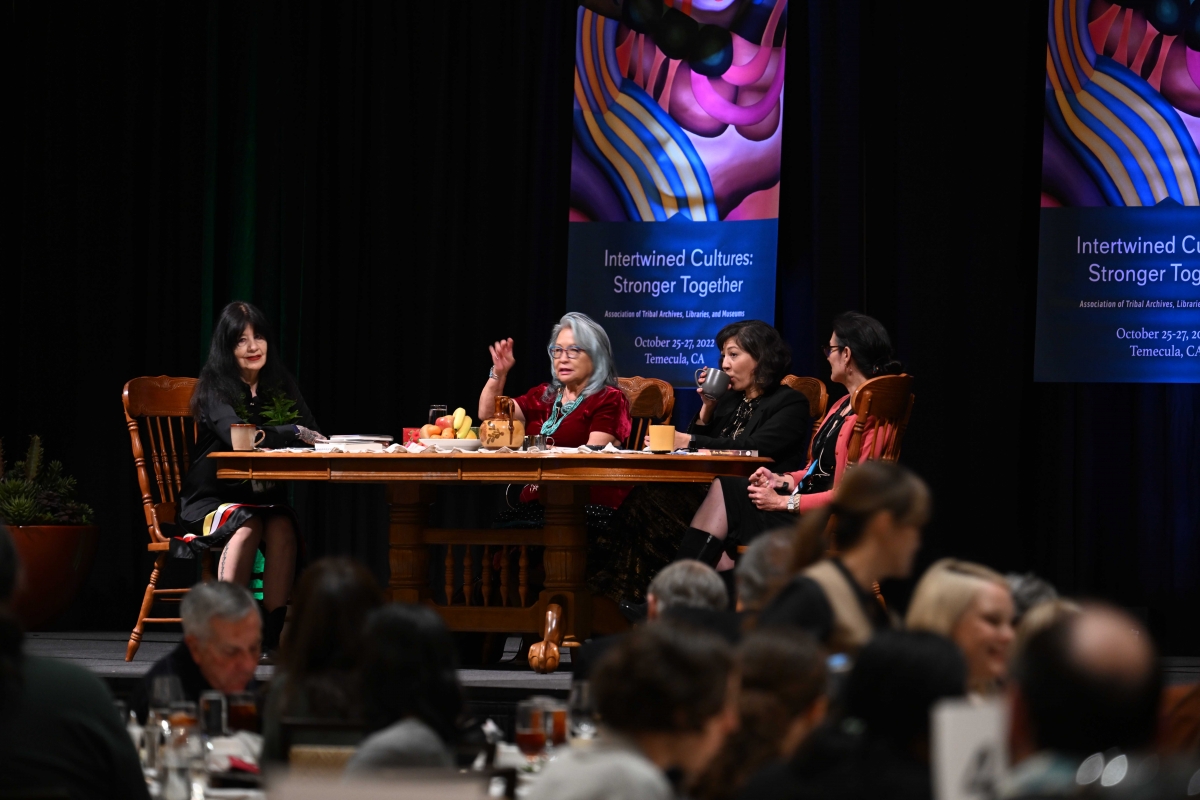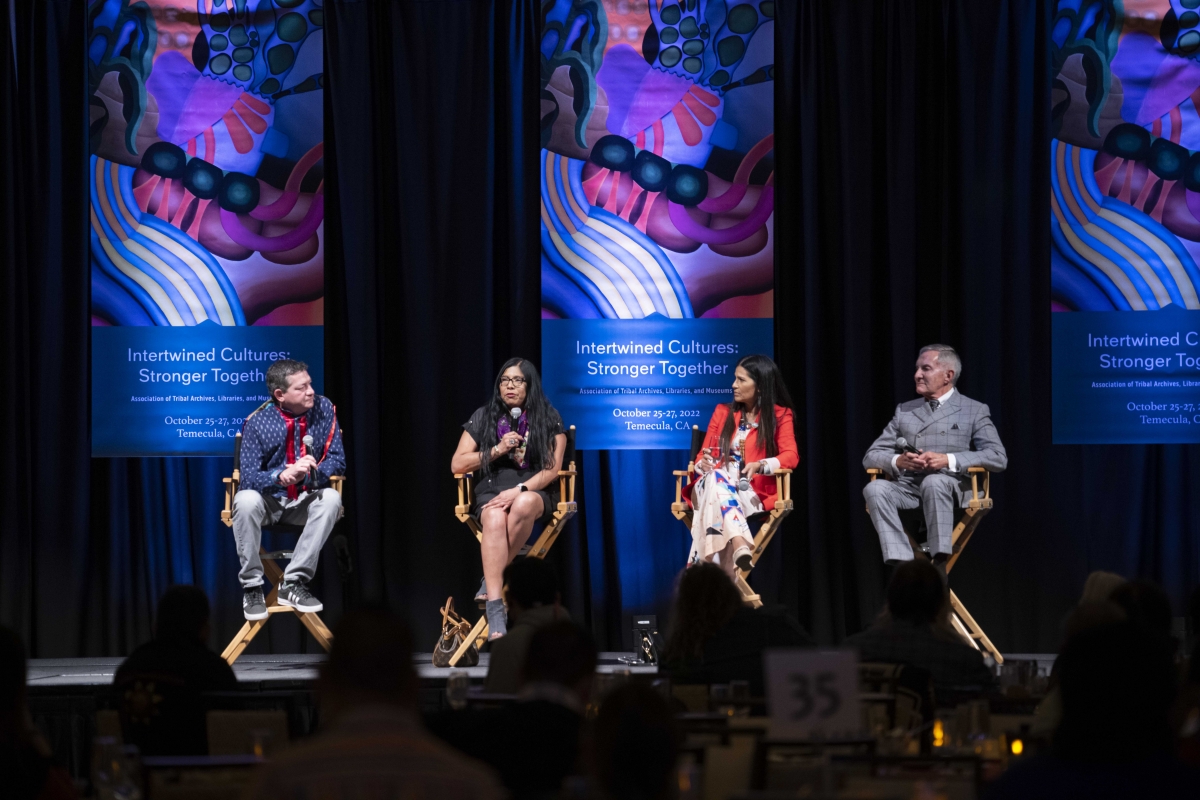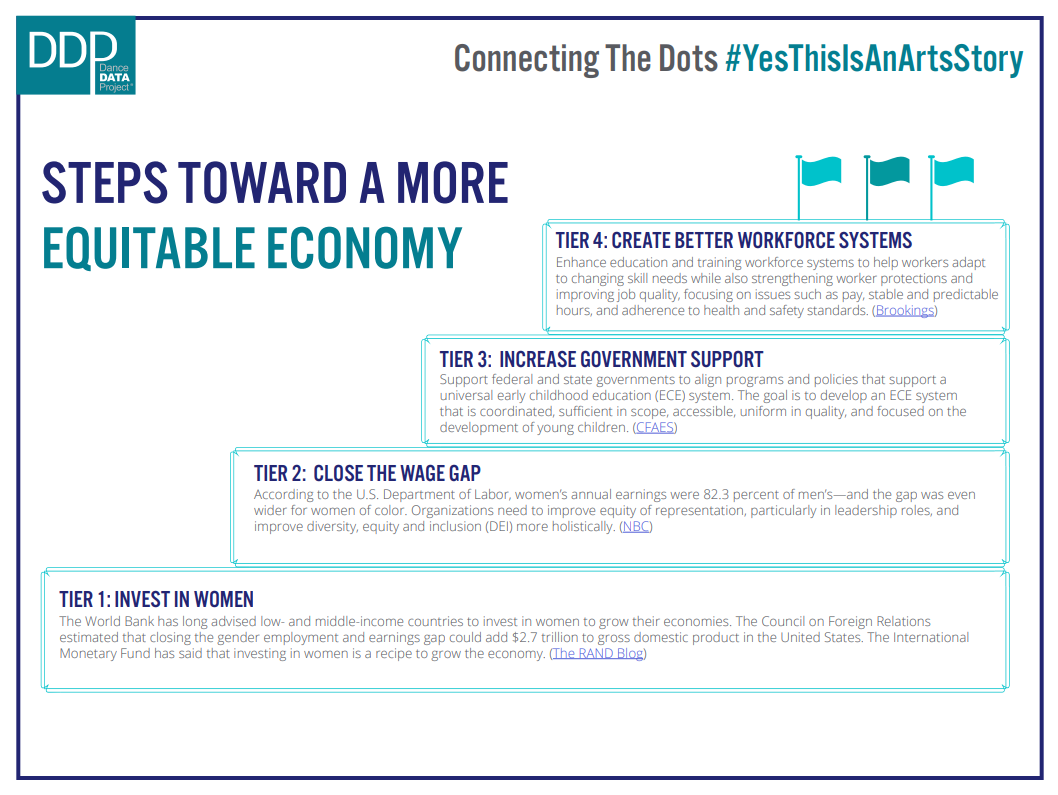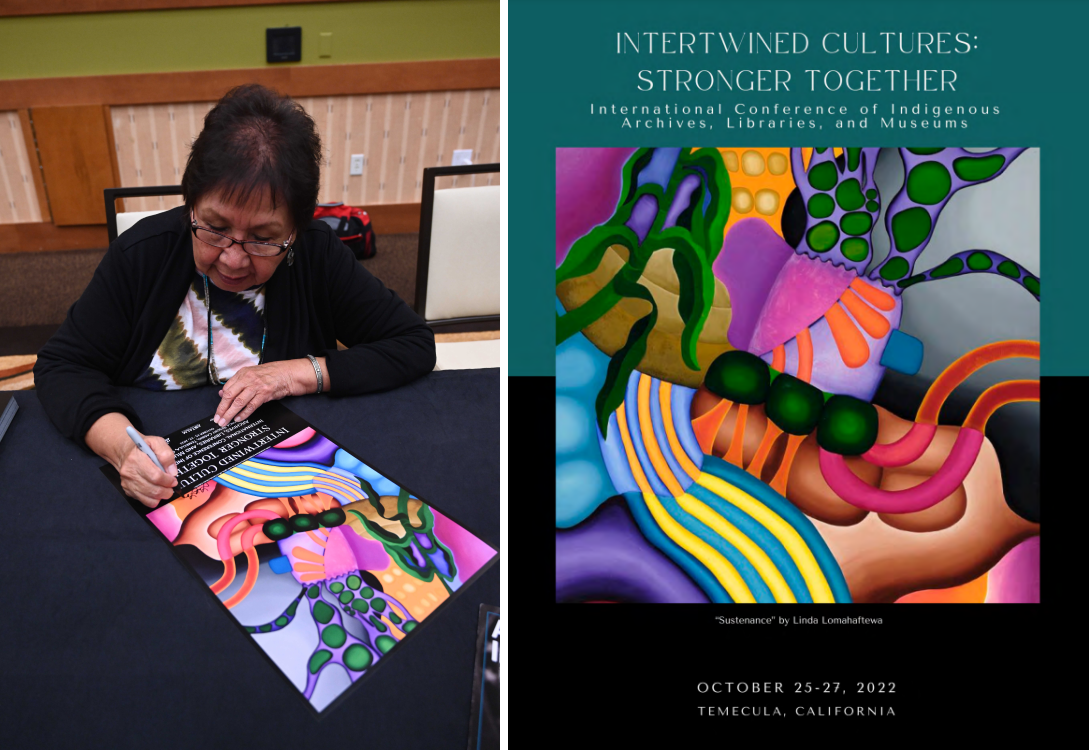Native-led organizations and Native American artists are receiving a well-deserved increase in public attention, recognition, and support. Mainstream arts organizations and funders are at long last offering significantly more opportunities for Native arts to be seen and heard, and...
Native-led organizations and Native American artists are receiving a well-deserved increase in public attention, recognition, and support. Mainstream arts organizations and funders are at long last offering significantly more opportunities for Native arts to be seen and heard, and I’m encouraged to see some of the major foundations and the federal cultural agencies demonstrate their leadership in support of Native arts and cultures. As 2022 draws to a close, it’s the perfect moment to reflect on the state of Indigenous arts and culture and to celebrate numerous successes for Native American artists and cultural organizations.
Native theater artists are in the spotlight with the positive news that Larissa FastHorse’s satirical comedy The Thanksgiving Play, which premiered off-Broadway in 2018 and is one of the top ten produced plays around the country, will debut on Broadway in 2023 produced by the prestigious Second Stage. The production marks FastHorse (Sicangu Lakota)—who also was a MacArthur Fellow in 2020—as the first female Native American playwright on Broadway. Mohegan theater maker Madeline Sayet’s Where We Belong, produced by Woolly Mammoth Theatre Company in association with Folger Shakespeare Library and the Public Theater, toured nationally in 2022 with additional dates planned in 2023 and beyond.

Joy Harjo at the National Arts Awards, photo by Neil Rasmus/BFA.com.
There was notable national recognition for Native artists this year. The National Native Americans Veterans Memorial “Warrior’s Circle of Honor” created by Harvey Pratt (Cheyenne and Arapaho Tribes of Oklahoma) on the grounds of the Smithsonian National Museum of the American Indian in Washington, D.C. The memorial was formally dedicated on Veterans Day and is one of the most significant pieces of public art created by a Native American. Joy Harjo (Muscogee/Creek), the internationally renowned poet, performer, and writer who served three terms as the first Native American U.S. Poet Laureate, was honored at the National Arts Awards with the 2022 Lifetime Achievement Award. Oklahoma-born contemporary artist Anita Fields (Osage) received one of the five prestigious Francis J. Greenburger Awards presented by Art Omi at the New Museum this fall. And the Indigenous comedy series “Reservation Dogs,” produced and directed by Sterlin Harjo (Seminole Nation of Oklahoma and Muscogee heritage), won two Independent Spirit Awards, for Best New Scripted Series and Best Ensemble Cast (as well as being the first major film project with an all-Indigenous creative team).
Major art shows in 2022 featured work from numerous Native artists. Museum of Modern Art’s “Greater New York” show at MOMA PS1 included art by G. Peter Jemison (Seneca), Athena LaTocha (Hunkpapa Lakota and Ojibwe), Alan Michelson (Mohawk), and Shelly Niro (Mohawk). The 2022 Whitney Biennial “Quiet as It’s Kept” featured more Indigenous artists than ever: Duane Linklater (Cree First Nations), Rebecca Belmore (Anishinaabekwe), Dyani White Hawk (Sicangu Lakota), and Raven Chacon (Dine), who also received the 2022 Pulitzer Prize in Music for “Voiceless Mass.”
From the galleries of prominent museums to Broadway, from streaming television to the National Mall, from MacArthur to Pulitzer Prizes, Native art is receiving well-deserved national attention. However, it is important to put this work in a broader social and political context, however. We live in a time of complicated politics, with huge environmental, cultural, and economic challenges and tremendous upheavals that continue to divide our nation. The murder of George Floyd ignited an urgent and deeper national discourse about racism, justice, and equity. Over the last year especially, Native leaders at the national level have made significant, tangible contributions addressing these and other major challenges.
Led by U.S. Secretary of the Interior Deb Haaland (Pueblo of the Laguna), the first Native American to serve as cabinet secretary, the agency moved forward with vigor to remove the racist and misogynist slur “squaw” from the national geographic landscape, including our national parks, as hundreds of geographic sites—including mountains, rivers, lakes, remote islands, and more—were renamed. According to Secretary Haaland, “Words matter, particularly in our work to make our nation’s public lands and waters accessible and welcoming to people of all backgrounds.”
The National Park Service (NPS) issued new policy guidance to strengthen Tribal co-stewardship of national park lands and waters, providing a powerful framework which goes beyond traditional consultation to help park managers strengthen their working relationships with Tribes. According to NPS Director Charles F. Sams III (enrolled member of the Confederated Tribes of the Umatilla Indian Reservation in Northeast Oregon with blood ties to the Cocopah Tribe and Yankton Sioux of Fort Peck), “All national parks are located on Indigenous ancestral lands and this policy will help ensure Tribal governments have an equal voice in the planning and management of them.” In related positive news, Tribes have led a land conservation effort that recently resulted in President Joe Biden pledging to protect Spirit Mountain, a sacred tribal site in southern Nevada, from development.
In early 2022, Shelly C. Lowe (Navajo) was confirmed by the U.S. Senate as the 12th Chair of the National Endowment for the Humanities (NEH). According to Lowe, “Having grown up in a small rural Navajo community [Ganado] in Northeast Arizona, I have personally seen how the humanities can help sustain and strengthen individuals, communities, and institutions, yet I am alert to the fact that access to humanities resources remains unevenly distributed across our country.” This year, with NEH funding through the American Rescue Plan Act of 2021, the Association of Tribal Archives, Libraries, and Museums (ATALM) distributed over $3.3 million to help Native cultural organizations as they emerge from the pandemic.

(L-R) Joy Harjo; Luci Tapahonso, Navajo Nation Inaugural Poet Laureate; Rena Priest, Washington State Poet Laureate; and Shelly Lowe speak at the 2022 ATALM conference “Intertwined Cultures: Stronger Together,” photo by Dr. Sven Haakanson, courtesy ATALM.
Filmmakers Aviva Kempner and Ben West (Cheyenne) are currently making the rounds at film festivals, museums, and cultural centers with their documentary “Imagining the Indian: The Fight Against Native American Mascoting.” The film details the long history of the misappropriation of Native culture—focusing on sports teams throughout the country with racist names and stereotype mascots—within the broader context of the national reckoning about racial injustice. In documenting this significant social movement, the film highlights the fierce advocacy work of Native leadership like Suzan Shown Harjo (Cheyenne and Hodulgee Muscogee), president of the national Native American rights organization Morning Star Institute, who has led this battle against the dehumanization of Native people over many decades. According to the National Congress of American Indians, by 2013 two-thirds of derogatory Native American sports mascots and logos had been eliminated. But, as this film puts in sharp focus, there is considerably more work to be done in addressing these issues. Arguably the most prominent example of this work, the renaming of the Washington NFL franchise to the Commanders, only became official as of the 2022 football season.

(L-R) Ben West, Rhonda LeValdo, Dr. Joely Proudfit, and W. Richard West participate in a panel discussion after a screening of “Imagining the Indian: The Fight Against Native American Mascoting,” photo by Dr. Sven Haakanson, courtesy ATALM.
Amid national conversations over the removal of Confederate monuments, an equestrian statue at the Central Park West entrance of New York’s American Museum of Natural History came down in 2022 after years of objections from activists and public art experts. The statue of President Theodore Roosevelt by sculptor James Earle Fraser depicts a Native American man to one side and an African man on the other “as subjugated and racially inferior,” according to the museum’s removal request to then-New York Mayor Bill de Blasio. The museum produced an exhibit, “Addressing the Statue” (on view July 16, 2019 to January 23, 2022), which provided new context and perspectives of the monument, and has taken the opportunity to rethink how it collaborates with Indigenous communities and how related exhibits and public programs are produced and presented. On January 19, 2022, the statue was removed and replaced by two plaques—one honoring Roosevelt, the other discussing the statue’s removal—and will be moved to the Theodore Roosevelt Presidential Library set to open in Medora, North Dakota in 2026, where it will be on “long term loan” from the City of New York and historically contextualized.
All the issues referenced above are cultural and demonstrate how cultural policy work goes far beyond appropriation levels for the National Endowment for the Arts and National Endowment for the Humanities, important as those are. We are at a crossroads in America, with fierce divides in our politics and a heated national discourse. May both the accomplishments and the struggles of Native American creative workers and leaders remind us of the values of resiliency, wisdom, tenacity, stamina, patience—and how important the arts and culture are to our collective future. What an inspiration the Native American cultural community is for all of us.











